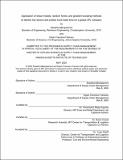Application of Linear Models, Random Forest, and Gradient Boosting Methods to Identify Key Factors and Predict Truck Dwell Time for a Global 3PL Company
Author(s)
Benjatanont, Sireethorn; Tantuico, Dylan
DownloadSupply Chain Management capstone research project (1.613Mb)
Metadata
Show full item recordAbstract
Driver dwell time is an important challenge the U.S trucking industry faces. High, unplanned
dwell times are costly to all stakeholders in the industry as they result in detention costs,
declining performance and decreased driver capacity. With the increasing demand for these
services, it is important to maximize the driving time of drivers in the industry by minimizing
dwell time to free up capacity and provide competitive wages. This project utilizes the data of a
third-party logistics company with the goal to understand the factors that influence dwell time,
and to construct the model to predict dwell time of a load. In the analysis, linear models, random
forest, and gradient boosting methods were explored based on regression and classification
approach. Ultimately, the random forest classification model with one-hour bins is the
recommended model as it had the highest predictive performance while the one-hour bins was
sufficient to meet the business need. Additionally, the analysis concludes that shipper facilities
are the most significant driver of dwell time. Hence, understanding and integrating more
granular observations on shipper practices within their facilities will allow a third-party logistics
company to improve its driver fleet utilization and increase the predictive performance of their
dwell time prediction model.
Date issued
2020-07-24Keywords
Data Analytics, Transportation, Machine Learning